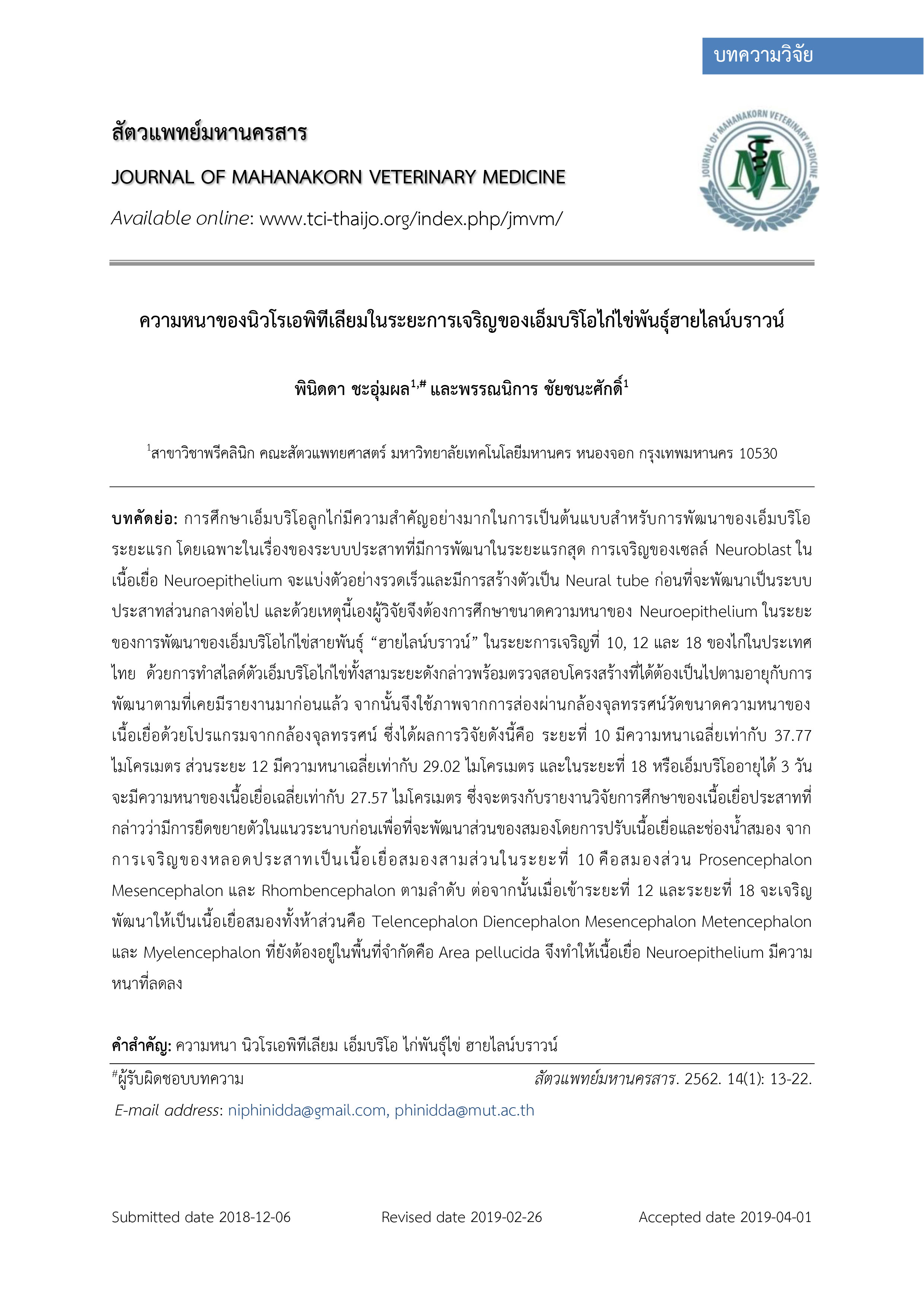The Thickness of Neuroepithelium in Hy-line Brown Chicks Embryogenesis
Main Article Content
Abstract
Studying of the chicken embryo is very important steps to becoming a model of the study of early embryonic development. Especially, the nervous system is one of the earliest systems to begin. During the neuroepithelium development, neuroepithelial cells divide rapidly to form the neural tube before the central nervous system formation. In this study, the thickness of neuroepithelium in Hy-Line Brown layer while chicken embryos were measured at stages of development on Stage 10, Stage 12 and Stage 18. The growing embryos while studying was concerned about normal structures that were formed as described in previous studies. The measurement of the thickness of neuroepithelium was confirmed by a microscopic program. The result of this study showed the thickness at Stage 10, Stage 12 and Stage 18 that were 37.77, 29.02 and 27.57 µm. respectively. Decreasing of the thickness of neuroepithelium is related with a stretch in the horizontal plane in order to develop the part of the brain and their ventricle. At Stage 10, the three primary brain vesicles, Prosencephalon, Mesencephalon and Rhombencephalon, were formed and continuous growing at Stage 12 and Stage 18. Finally, the embryonic brain can be divided into five parts that were Telencephalon, Diencephalon, Mesencephalon, Metencephalon and Myelencephalon. Because of chicken embryo developed in a restricted area of Area pellucida, that cause of the decreasing of neuroepithelium.
Article Details
References
Hamburger, V. and H. L. Hamilton. 1992. A series of normal stages in the development of the chick embryo. Dev. Dyn. 195: 231-72.
Lawson, A., and M. A. 1992. England. Studies on wound healing in the neuroepithelium of the chick embryo. Anat. Rec. 233(2): 291-300.
Nagele, R. G., K. T. Bush, F. J. Lynch, and H. Y. Lee. 1991. A morphometric and computer-assisted three-dimensional reconstruction study of neural tube formation in chick embryos. Anat. Rec. 231(4): 425-436.
Psychoyos, D, and R. Finnell. 2009. Assay for neural induction in the chick embryo. J. Vis. Exp. 13:(24): 1027
Witschi, E. 1956. Development of Vertebrates. Saunders, Philadelphia.
Zhou, Z., Z. Chen, J., Shan, W. Ma, L. Li, J. Zu, and J. Xu. 2015. Monitoring brain development of chick embryos in vivo using 3.0 T MRI: subdivision volume change and preliminary structural quantification using DTI. BMC. Dev. Biol. 15: 29.


